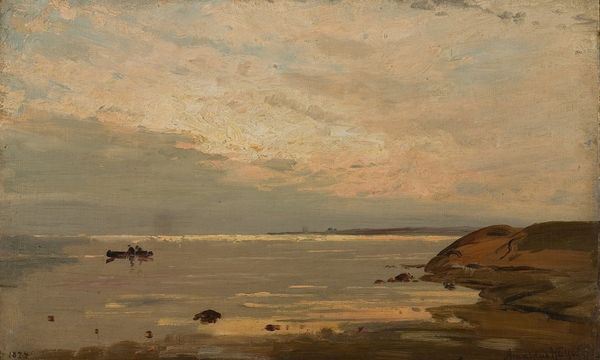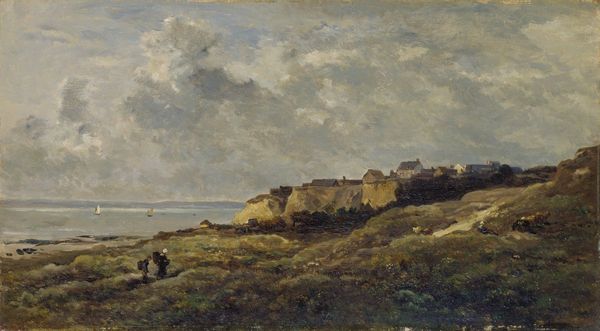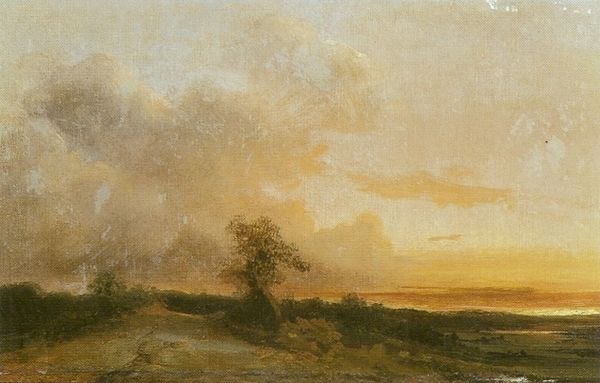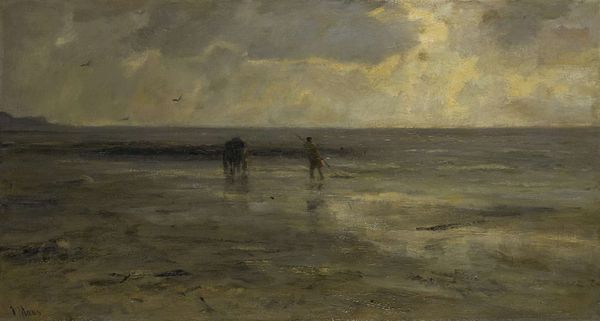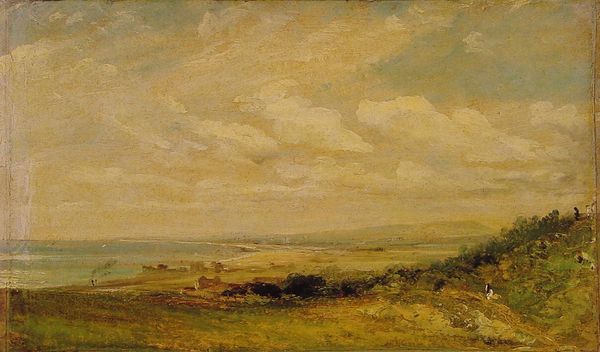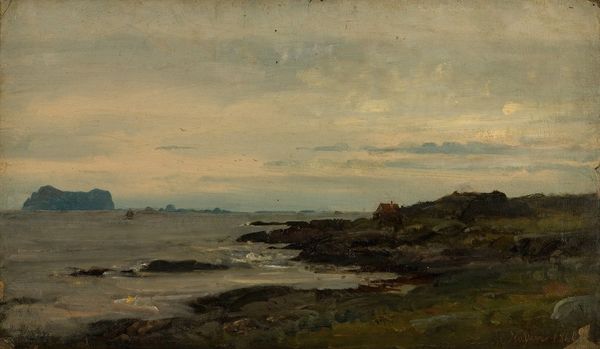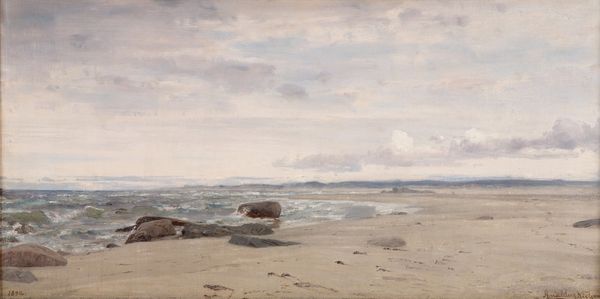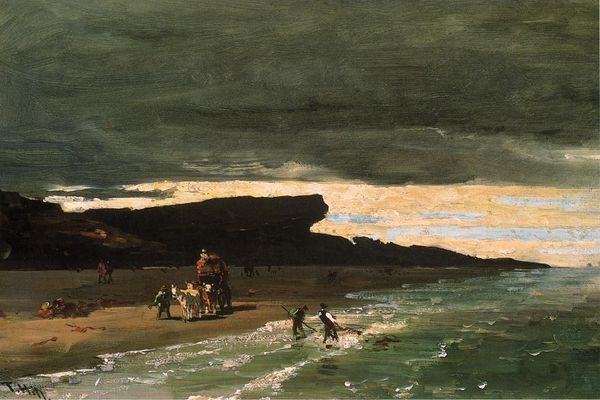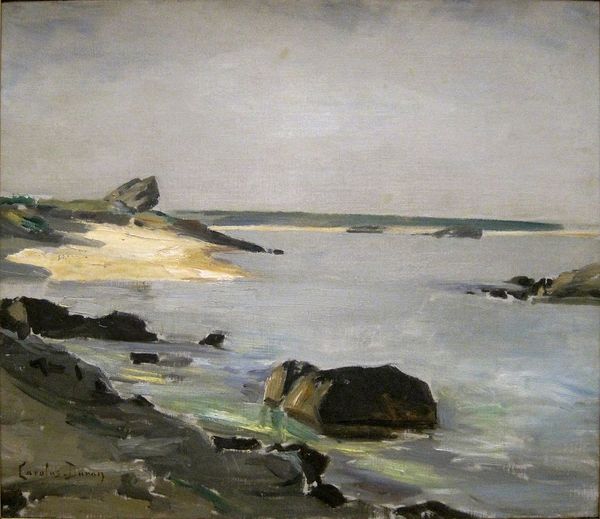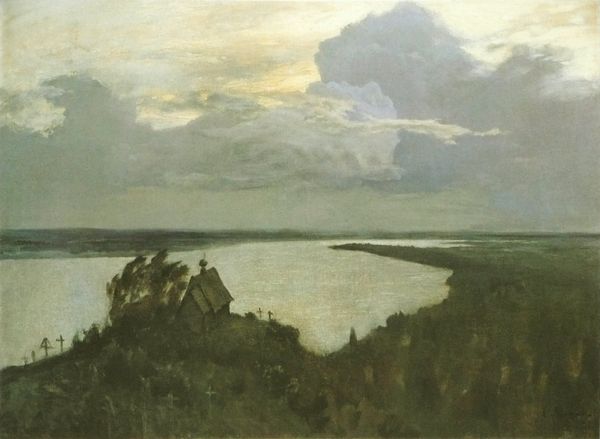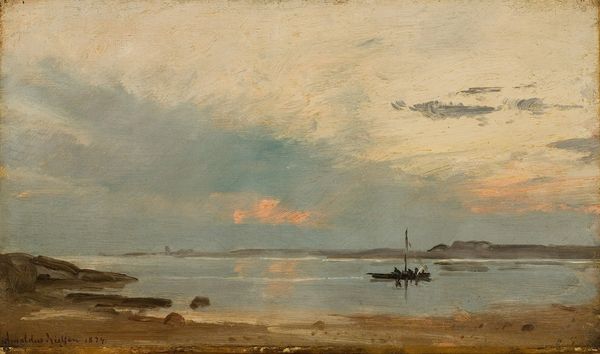
painting, plein-air, oil-paint, impasto
#
painting
#
plein-air
#
oil-paint
#
landscape
#
figuration
#
oil painting
#
impasto
#
romanticism
#
realism
Copyright: Public domain
Editor: This is "Coastal Landscape, Portmarnock" by Nathaniel Hone the Younger, painted with oil on…something. I'm getting a feeling of solitude, like I’m watching a person lost in thought on a cloudy beach. What strikes you most about it? Curator: The seeming ordinariness is compelling, isn't it? It exemplifies the late 19th-century shift towards capturing everyday life, particularly through plein-air painting. Hone wasn't depicting grand historical scenes; he focused on the accessible Irish coastline. Do you think that democratization of subject matter might have changed how art was perceived? Editor: I think so, yes! It feels more…personal, more relatable to see someone just hanging out at the beach. The beach isn’t necessarily some grandiose idea but just something a person interacts with. Curator: Exactly. But even something as ostensibly apolitical as a beach scene carries weight. The rise of leisure time for the middle class, made possible by industrialization, transformed coastal areas into sites of recreation and social interaction. Consider how these images helped shape the public’s understanding and even their desire for these coastal experiences. Also, Hone’s very choice to paint *en plein air* signaled a different kind of artistic authority – one rooted in direct experience rather than academic tradition. Editor: So the painting isn't just *of* a beach, but also speaks to changes in society at the time. I didn’t think about it that way. I just saw a lone figure and some plants by the shore. Curator: Indeed. The 'realism' isn't just visual, it’s social. How public spaces are perceived and used, who has access – these are implicit in the depiction. Editor: I like how something that seems so simple is actually pretty complex. It reminds us that paintings can have more meanings if we look closely and think about society back then. Curator: Precisely. It encourages us to question what seems ‘natural’ or given in any representation. That's the ongoing conversation with art history!
Comments
No comments
Be the first to comment and join the conversation on the ultimate creative platform.
